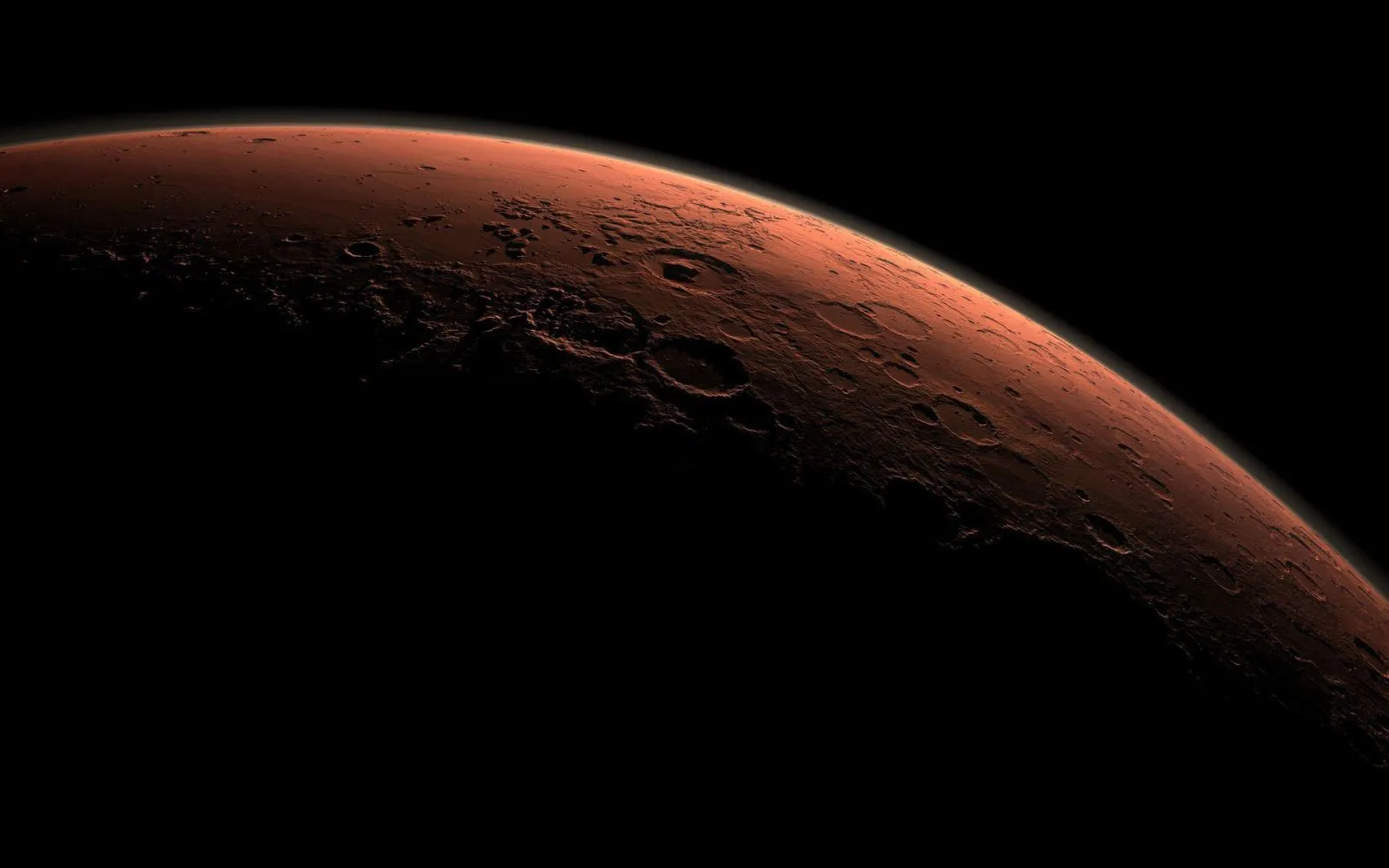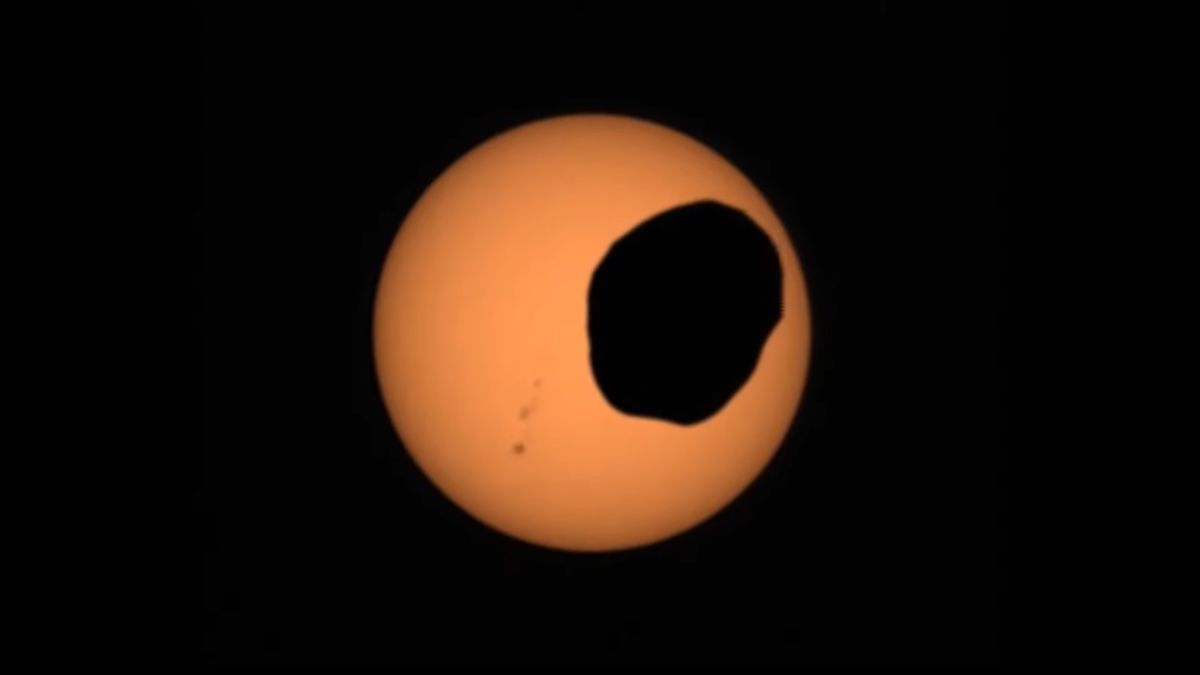An ancient moon may have deformed the planet Mars
Published by Adrien,
Source: Journal of Geophysical Research: Planets (preprint via arXiv)
Other Languages: FR, DE, ES, PT
Source: Journal of Geophysical Research: Planets (preprint via arXiv)
Other Languages: FR, DE, ES, PT
Follow us on Google News (click on ☆)

Wikimedia image
Mars, which today is orbited by two small moons, could have once hosted a much larger moon in its past. This moon, nicknamed Nerio, might have altered the Martian surface, creating impressive geological formations.
Researchers suggest that Nerio played a crucial role in shaping Mars' extreme features, such as the Tharsis region, a vast area of high plateaus and massive volcanoes.
Nerio's gravity could have caused strong tides in Mars' magma oceans, locking certain surface deformations in place as the planet rapidly cooled. This effect may explain why Mars presents such contrasting relief between its hemispheres, with high plateaus opposite Tharsis.
But what happened to Nerio? Astronomer Michael Efroimsky, who proposed this hypothesis, suggests several scenarios: a collision may have pulverized it, leaving behind the current moons Phobos and Deimos, or it might have been ejected from the solar system by a gravitational interaction with another celestial body.

Screenshot of a video showing the Martian moon Phobos passing in front of the Sun. NASA's Perseverance rover captured this video on April 2, 2022. A group of sunspots can also be observed on the left.
Credit: NASA/JPL-Caltech/ASU/MSSS/SSI
However, this hypothesis raises many questions. If Nerio indeed existed, its destruction should have left visible traces, like a chain of craters. Yet, no clear evidence has been discovered—perhaps erased by later geological activity.
Nerio's hypothesis invites researchers to explore new avenues to either prove or refute this theory.
What is a magma tide?
On Mars, as on Earth, the gravity of a moon can create tides. However, instead of lifting water, the ancient, massive moon named Nerio could have raised magma, the molten rock beneath the surface.
This phenomenon, called a "magma tide," deforms the planet's crust by creating waves in the magma oceans. When Mars cooled down, these deformations might have solidified the surface, leaving visible traces in its current landscapes.